Ford Puma VS VW Arteon – Specs, Efficiency & Price Comparison
Which model is the better choice – the Ford Puma or the VW Arteon? We compare performance (168 HP vs 320 HP), boot capacity (523 L vs 590 L), efficiency (13.10 kWh5.40 L vs 5.10 L), and of course, the price (24800 £ vs 43300 £).
Find out now which car fits your needs better!
The Ford Puma ({ body-type_1}) is powered by a Petrol MHEV, Electric engine and comes with a Manuel, Automatic transmission. In comparison, the VW Arteon (Estate) features a Diesel, Petrol engine and a Automatic gearbox.
When it comes to boot capacity, the Ford Puma offers 523 L, while the VW Arteon provides 590 L – depending on what matters most to you. If you’re looking for more power, you’ll need to decide whether the 168 HP of the Ford Puma or the 320 HP of the VW Arteon suits your needs better.
There are also differences in efficiency: 13.10 kWh5.40 L vs 5.10 L. In terms of price, the Ford Puma starts at 24800 £, while the VW Arteon is available from 43300 £.
Compare all the key specs now and find out which model fits your lifestyle best!
In the ever-evolving compact SUV segment, the Ford Puma stands out with its sporty design and agile performance, appealing to drivers seeking a blend of style and practicality. Meanwhile, the VW Arteon, with its sleek coupe-like silhouette and luxurious interior, caters to those desiring a more premium experience. While both models showcase exceptional engineering, the choice ultimately hinges on whether you prioritize urban versatility or refined elegance.
Ford Puma
The Ford Puma presents itself as a stylish compact SUV with a distinctive design that combines practicality with a dynamic driving experience. Its sleek lines and sporty aesthetics make it stand out on the road, while the interior offers a comfortable and tech-savvy environment. With an emphasis on efficiency and a smooth drive, the Ford Puma is well-suited for both urban commutes and countryside adventures.
details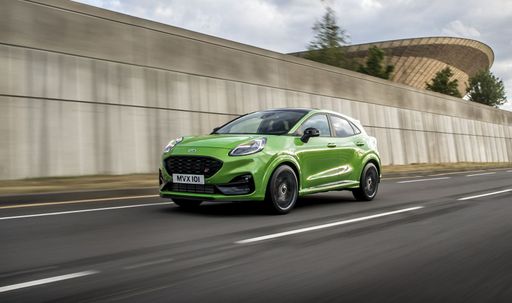 @ puma.fordpresskits.com
@ puma.fordpresskits.com
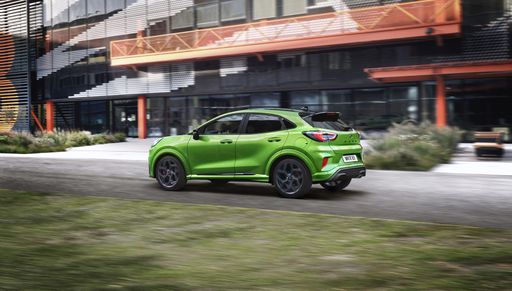 @ puma.fordpresskits.com
@ puma.fordpresskits.com
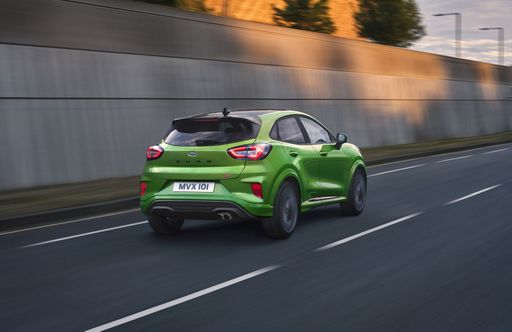 @ puma.fordpresskits.com
@ puma.fordpresskits.com
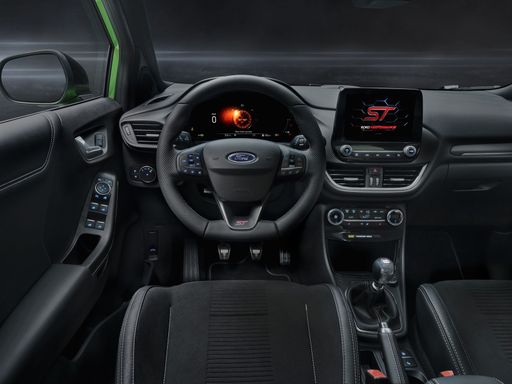 @ puma.fordpresskits.com
@ puma.fordpresskits.com
VW Arteon
The VW Arteon is a striking example of modern automotive design, combining sleek aesthetics with cutting-edge technology. Its dynamic silhouette and expressive front grille give it an unmistakable presence on the road, appealing to those who value style and sophistication. Inside, the cabin offers a seamless blend of comfort and connectivity, ensuring a premium experience for both driver and passengers.
details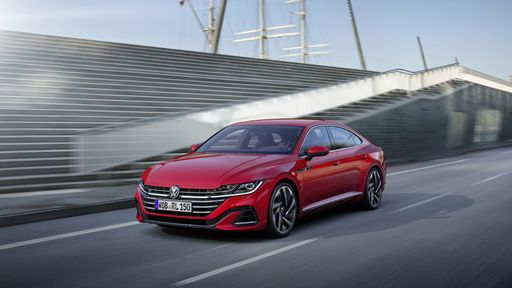 @ Volkswagen
@ Volkswagen
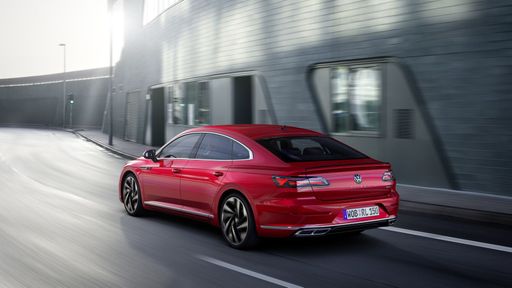 @ Volkswagen
@ Volkswagen
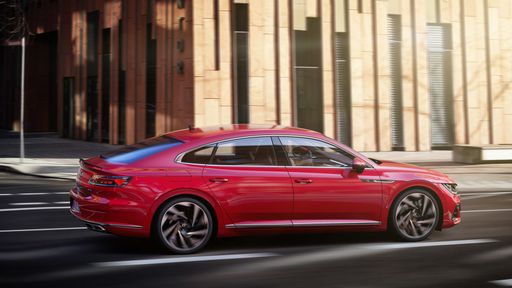 @ Volkswagen
@ Volkswagen
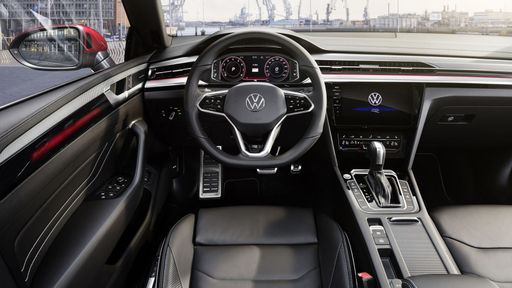 @ Volkswagen
@ Volkswagen
When it comes to the ever-expanding automotive market, the competition between compact SUVs and executive wagons becomes increasingly intense. In this comparison, we will delve into the distinctive features of the Ford Puma and the VW Arteon, analyzing their technical specifications, innovations, and overall appeal to consumers seeking practicality and performance.
Design and Build Quality
The Ford Puma presents an agile and sporty stance characteristic of a compact SUV. Its exterior offers stylish curves and a modern aesthetic, designed to attract urban dweller as well as adventure-seekers. With a length ranging from 4186 to 4226 mm and a width of 1805 mm, the Puma stands at an impressive height of 1550 mm.
In contrast, the VW Arteon carries a more upscale design as a wagon. Measuring 4866 mm in length and 1871 mm in width, the Arteon boasts a lower height of approximately 1451 mm, giving it a sleek and elongated appearance. This elegant silhouette is complemented by quality materials inside and out, adhering to VW's reputation for build quality.
Engine Options and Performance
The Ford Puma is equipped with a range of efficient engines, including petrol mild-hybrid variants with power options varying from 125 to 168 HP. With consumption figures around 5.4 to 6 L/100 km, its efficient design helps it stand out in terms of CO2 efficiency, with models rated from Class A to D. Acceleration from 0-100 km/h averages around 9.8 seconds, depending on the engine variant.
The VW Arteon goes beyond with its array of powerful engines, offering options from 150 HP diesel models to 320 HP petrol configurations. Fuel consumption ranges from 5.1 to 8.6 L/100 km, yielding CO2 emissions from 133 to 195 g/km. Notably, its high-end 320 HP variant performs impressively, achieving 0-100 km/h in just 4.9 seconds. This showcases Arteon’s capability as both a family car and a dynamic performer on the road.
Transmission and Drive Systems
Ford offers the Puma with manual and dual-clutch automatic transmission options, ensuring a smooth driving experience, specifically with its front-wheel-drive setup. The versatile design allows for practical driving in various conditions, aligning with the everyday demands of modern drivers.
On the other hand, the VW Arteon features a strictly automatic dual-clutch transmission, available in both front and all-wheel-drive configurations. This results in seamless gear changes and excellent handling, making it an enjoyable ride for those who embrace a more dynamic driving style.
Interior and Technology
Inside, the Ford Puma is tailored for practicality with its spacious cabin and commendable trunk capacity ranging from 456 to 523 liters. Ford also introduces innovative tech features such as its SYNC infotainment system, designed to enhance user connectivity and convenience. The Puma is a great choice for those who prioritize functionality and modern conveniences.
The VW Arteon, however, takes a more premium approach. Its interior is defined by a sophisticated layout with high-end materials. The Arteon boasts advanced technology, including an impressive infotainment system and a superior sound system. With a trunk capacity of 590 liters, it provides ample space without sacrificing style or comfort.
Conclusion: Which to Choose?
Choosing between the Ford Puma and VW Arteon ultimately boils down to personal preferences and specific needs. For those looking for a compact SUV that excels in practicality, efficiency, and city driving, the Ford Puma stands out as an excellent choice. Conversely, if you're in the market for an upscale wagon featuring powerful performance and luxurious amenities, the VW Arteon is hard to beat.
Both vehicles bring their unique advantages to the table, catering to different segments of the automotive market, and ensuring that buyers are well-equipped to make informed decisions based on their lifestyle and budget.

|

|
|
|
|
Costs and Consumption |
|
|---|---|
|
Price
24800 - 34800 £
|
Price
43300 - 60800 £
|
|
Consumption L/100km
5.4 - 6 L
|
Consumption L/100km
5.1 - 8.6 L
|
|
Consumption kWh/100km
13.1 - 13.7 kWh
|
Consumption kWh/100km
-
|
|
Electric Range
364 - 376 km
|
Electric Range
-
|
|
Battery Capacity
43 kWh
|
Battery Capacity
-
|
|
co2
0 - 136 g/km
|
co2
133 - 195 g/km
|
|
Fuel tank capacity
42 L
|
Fuel tank capacity
66 L
|
Dimensions and Body |
|
|---|---|
|
Body Type
SUV
|
Body Type
Estate
|
|
Seats
5
|
Seats
5
|
|
Doors
5
|
Doors
5
|
|
Curb weight
1316 - 1563 kg
|
Curb weight
1607 - 1773 kg
|
|
Trunk capacity
456 - 523 L
|
Trunk capacity
590 L
|
|
Length
4186 - 4226 mm
|
Length
4866 mm
|
|
Width
1805 mm
|
Width
1871 mm
|
|
Height
1550 - 1555 mm
|
Height
1434 - 1451 mm
|
|
Payload
367 - 469 kg
|
Payload
467 - 569 kg
|
Engine and Performance |
|
|---|---|
|
Engine Type
Petrol MHEV, Electric
|
Engine Type
Diesel, Petrol
|
|
Transmission
Manuel, Automatic
|
Transmission
Automatic
|
|
Transmission Detail
Manual Gearbox, Dual-Clutch Automatic, Reduction Gearbox
|
Transmission Detail
Dual-Clutch Automatic
|
|
Drive Type
Front-Wheel Drive
|
Drive Type
Front-Wheel Drive, All-Wheel Drive
|
|
Power HP
125 - 168 HP
|
Power HP
150 - 320 HP
|
|
Acceleration 0-100km/h
7.4 - 9.8 s
|
Acceleration 0-100km/h
4.9 - 9.4 s
|
|
Max Speed
160 - 210 km/h
|
Max Speed
216 - 250 km/h
|
|
Torque
170 - 290 Nm
|
Torque
320 - 420 Nm
|
|
Number of Cylinders
3
|
Number of Cylinders
4
|
|
Power kW
92 - 124 kW
|
Power kW
110 - 235 kW
|
|
Engine capacity
999 cm3
|
Engine capacity
1968 - 1984 cm3
|
General |
|
|---|---|
|
Model Year
2024 - 2025
|
Model Year
2024
|
|
CO2 Efficiency Class
D, E, A
|
CO2 Efficiency Class
D, E, F, G
|
|
Brand
Ford
|
Brand
VW
|
Ford Puma
A Glimpse into the Ford Puma: Fusing Style with Innovation
The Ford Puma stands as a testament to modern engineering fused with style. This compact SUV is not just about aesthetics but brings to the table an array of technical innovations, topped with the reliability and performance Ford is known for. Let's delve into the technical specifics and innovative features that make the Ford Puma a stellar choice for any car enthusiast.
Powertrains and Performance
The Ford Puma is offered with a range of powertrains designed to deliver optimal performance whilst minimising fuel consumption. At the heart of this compact SUV is the 1.0 EcoBoost Hybrid engine, available in both 125 PS and 155 PS variants. This engine is a marvel of engineering, optimised to deliver power efficiently with a remarkable fuel consumption ranging from 5.4 to 5.7 L/100km for manual versions, and slightly higher for the automated variants.
The top-end 1.5 EcoBoost ST variant takes performance up a notch, providing a robust 200 PS that propels the Puma from 0 to 100 km/h in just 6.7 seconds. This variant is perfect for those who prioritise performance and exhilaration in their driving experience.
Mild-Hybrid Technology
The Puma's mild-hybrid technology plays a significant role in enhancing fuel efficiency and reducing emissions. By utilising a belt-driven integrated starter/generator, the Puma recovers energy usually lost during braking, storing it in a 48-volt lithium-ion battery. This stored energy is then used to assist the engine, providing a boost during acceleration and smoothing out the stop-start technology, ultimately leading to enhanced fuel efficiency.
Design and Comfort
The Ford Puma does not compromise on style and comfort with its ergonomic and stylish design. The SUV is available in multiple trims including the ST-Line, Titanium, and the luxurious Vignale editions, each offering unique aesthetic and technological enhancements. These trim levels provide varied offerings in terms of both exterior styling and interior comfort, ensuring there's a Puma that meets every personal preference.
Inside, the Puma offers a driver-focused cockpit with advanced technological integrations such as the SYNC 3 infotainment system, providing seamless connectivity and intuitive control of the vehicle's numerous technological features.
Safety and Technology
Safety remains paramount, and the Ford Puma is equipped with the latest security and technology features. It boasts the Ford Co-Pilot360 suite which includes adaptive cruise control, pre-collision assist with autonomous emergency braking, and lane-keeping assist, enabling a safer driving experience on both city roads and highways.
Versatility and Practicality
Beyond performance and safety, the Ford Puma shines in its versatility. With a boot capacity of 456 litres, it offers ample space for all sorts of adventures, whether you're heading on a family trip or loading sports equipment. Its innovative MegaBox is an extra storage solution, providing additional space below the boot floor.
The Puma's agile handling, paired with its compact dimensions—spanning a length of 4186 to 4266 mm and a width of 1805 mm—makes it an ideal choice for urban commuting and beyond.
Conclusion
In conclusion, the Ford Puma beautifully blends practical features with cutting-edge technology, offering a package that appeals to both the tech-savvy driver and those seeking comfort and reliability. Its range of innovative features, powerful yet efficient engine options, and a design that is both functional and stylish make it a frontrunner in the compact SUV market.
Whether you're drawn by the efficient mild-hybrid engines or the robust performance of the ST variant, the Ford Puma represents a modern driving experience where innovation meets everyday usability.
VW Arteon
Introducing the Elegant VW Arteon
The VW Arteon represents Volkswagen's commitment to combining style with advanced automotive technology. As a standing testament to German engineering excellence, the Arteon is designed for those who seek to make a statement both on the road and in their everyday lives. This sophisticated model comes in various configurations to meet diverse driving needs.
Performance and Engine Options
Under the bonnet, the Arteon offers a range of engines to suit different preferences. Buyers can choose between petrol and diesel variants, with power outputs ranging from 150 PS to an exhilarating 320 PS. The diesel units are particularly appealing for those mindful of fuel consumption, achieving impressive figures as low as 5.1 L/100km.
The Arteon Shooting Brake R, with its 320 PS petrol engine and all-wheel drive, ensures a thrilling ride, accelerating from 0-100 km/h in just 4.9 seconds. This version showcases the model's peak performance capabilities, wrapped in an aerodynamic design.
Technological Innovations
Innovative technology forms the backbone of the Arteon's sophisticated driving experience. A standout feature is the DSG automatic dual-clutch transmission, ensuring smooth gear changes and optimised performance. VW's 4MOTION all-wheel drive system is available on select models, providing enhanced traction and stability in various driving conditions.
Inside, the Arteon features a state-of-the-art infotainment system, complemented by an advanced driver assistance suite, which includes adaptive cruise control, lane-keeping assistance, and emergency braking systems, all working to enhance safety and convenience.
Efficient and Sustainable
In an era where efficiency is key, the Arteon fits perfectly into Volkswagen's sustainable driving philosophy. The available engines are designed to meet current emission standards, and their efficiency is reflected in CO2 outputs between 133 and 195 g/km, placing them in various CO2 efficiency classes from D to G.
Aesthetic Appeal and Practicality
With dimensions of 4866 mm in length, 1871 mm in width, and a height ranging from 1434 to 1451 mm, the Arteon boasts a striking and aerodynamic silhouette. Its spacious interior and 590-litre boot capacity make it a practical choice for families and professionals alike.
The Arteon maintains a balance of luxury and practicality across all its trim levels, including the DSG, Elegance DSG, R-Line DSG, and their 4MOTION counterparts. These options allow customers to tailor the Arteon to meet both aesthetic and functional preferences.
A Comprehensive Package
Priced between €50,495 and €70,875, the Arteon offers a comprehensive package for a range of budgets. Whether choosing the elegance of the Elegance DSG or the sporty R-Line with 4MOTION, each Arteon promises to deliver an exceptional driving experience synonymous with the Volkswagen brand.
The prices and data displayed are estimates based on German list prices and may vary by country. This information is not legally binding.
